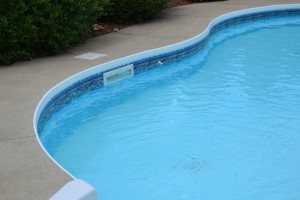 We have experienced a plethora of rain this season. Summer is known for high heat, humidity, and in our case, a lot of rain. This can cause serious problems for swimming pool owners. No need to worry, if you upkeep your pool, damage should be avoidable.
We have experienced a plethora of rain this season. Summer is known for high heat, humidity, and in our case, a lot of rain. This can cause serious problems for swimming pool owners. No need to worry, if you upkeep your pool, damage should be avoidable.
“When these harsh weather conditions occur, pool owners often complain about green pools, lots of dirt, leaves, and sometimes entire garden beds washed into pools,” says Al Curtis from Ask the Pool Guy. “Heavy rain also dilutes pool chemicals, and that’s why you end up with a green pool. Green pools is usually an indication your pool water is not sanitized or healthy, and it needs to be addressed as soon as possible. No one should be swimming in a green pool.”
Check out these top tips to keep your pool from running wild:
After heavy rain-
- Your pool water will almost always need to be re-balanced after a thunderstorm or a heavy rainfall. We recommend taking a sample of pool water, a couple feet down, and having it tested by a technician from Ask the Pool Guy. If you would like, you can also purchase test strips and test it at home. After the water is tested, you will be able to diagnose the water and buy the appropriate chemicals.
- Reduce the water level to below the top of the skimmer basket door so it can skim surface debris. Some debris will likely drop to the bottom of the pool, and in this case, it will need to be removed. After settled debris is removed, use a pool chemical like Supa-Floc or Drop Out. These are designed for dirty swimming pools. The chemical compounds in these products cause the dirt to bind to them and drop to the bottom of the pool. Then they can be easily vacuumed away.
- It might be necessary to increase the hours of filter operation until the pool is clear. The time this will take depends on the amount of debris and also the size of your pool.
- In times of heavy rainfall and thunderstorms, there is a demand for algaecides which will kill algae and help freshen up the pool.
- If you have a salt water pool, extra chlorine might need to be added after a heavy rainfall to boost chlorine levels.
- Backwash the filter on your pool for optimal filter efficiency.
- Check the skimmer basket and empty, as well as empty the pump of debris. They can tear when they get too full.
After algae blooms-
- Chlorine is typically the best defense against algae. This is especially important during periods of hot weather. If you have a salt pool, try the ‘super chlorinate’ setting on your salt chlorinator to help fix the problem. When the weather is hotter, the pool is used more frequently, and more chlorine is required to keep sanitized. Pools in hot weather are not cooling down over night; therefore, the chlorine demand remains high.
- Algae love phosphates and feed on them. If your pool water is high in phosphates, it needs to be addressed. Phosphates enter your pool through bird and bat droppings, roof water, swimsuits, and people. Chlorine alone isn’t enough to eliminate phosphates. You will need a specially designed chemical such as Phosphate Starver to eliminate this problem to reduce algae.
- If your pool’s pH levels are too high, it can form scale on the surface of your pool and salt chlorinator. Simply add some form of acid to the water. If the pH levels are too low, the water can start to burn swimmer’s eyes and skin and create an itching sensation. Correct pH levels make the pool comfortable to swim in, and help chlorine do its job. When chlorine is properly doing its job, algae blooms are less likely.
Think your pool is beyond repair after the rain? A technician from Ask the Pool Guy can be there shortly to restore order and make your pool sparkling once again.
